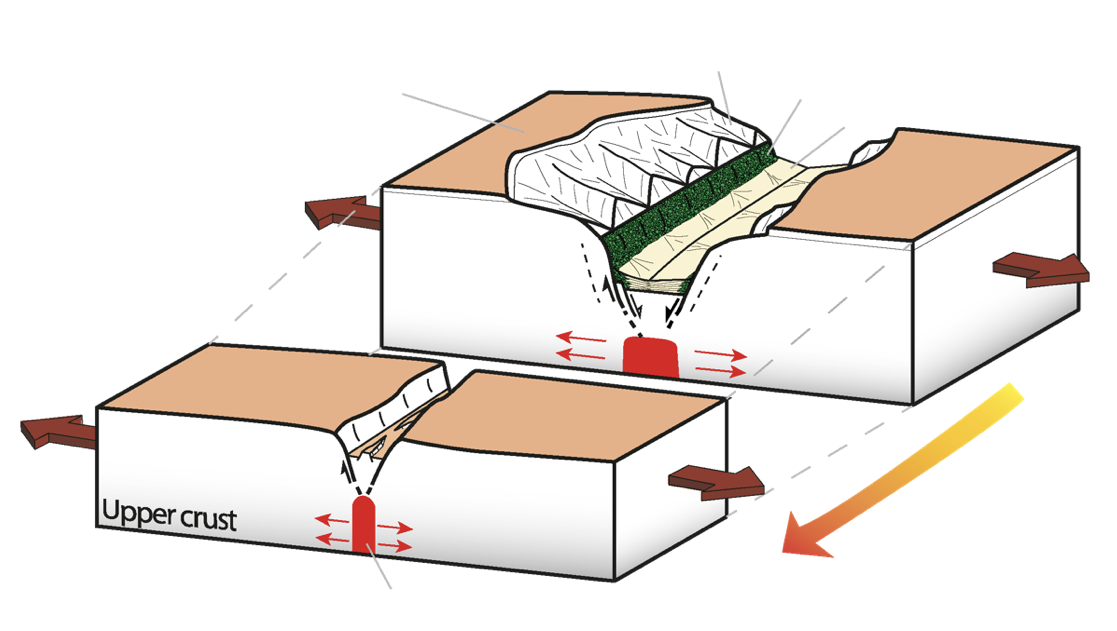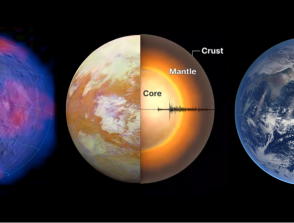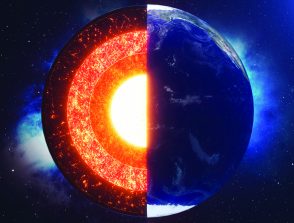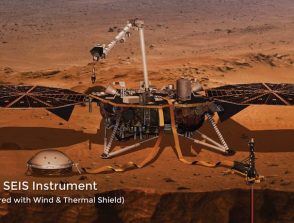Seismo-tectonic study of the seismic sources detected by the InSight mission in the Elysium Planitia province, Mars

Start: 01 October 2019
End: 22 April 2022
Supervisors :
Philippe Lognonné, Antoine Lucas, Clément Perrin
Related observatories :
InSight Observatory
Related teams :
Planetology and Space Sciences
Related themes :
Earth and Planetary Interiors
Status: Defended
The InSight mission landed in the Elysium Planitia province on Mars on November 26th, 2018. Since February 2019, thanks to the deployment of the SEIS seismometer on the surface of the planet, more than a thousand seismic events, the “marsquakes”, have been recorded, proving that Mars is seismically active. The analysis of these marsquakes allowed to probe for the first time the internal structure of Mars, from the crust to the core. Marsquakes are divided into several categories, including in particular low-frequency and broadband events. These events are most similar to terrestrial earthquakes and are called “tectonic”, meaning that they would certainly have been generated by seismic sources such as faults or fractures. A dozen of them have been located in Elysium Planitia, and more precisely on the Cerberus Fossae system. The latter is a major structure of more than 1200 km long, composed of 4-5 main trenches, and whose activity is supposed to be very young (less than 10 Ma). Its formation is certainly linked to the propagation of networks of volcanic dikes at depth, which are radially distributed around the Elysium Mons volcano.
In order to understand the involvement of Cerberus Fossae in the initiation of these events, and to discuss the current tectonic activity of the region, we make a seismo-tectonic study of Cerberus Fossae and identify potential seismic sources. In the first part of this work, a fine analysis of the morphology of the Cerberus Fossae system is performed. Very high-resolution images are used to map precisely the fractures and to calculate digital elevation models. Measurements of fossae widths and throw decrease towards the east, indicating the long-term propagation direction of the fracture system, following that of the volcanic dikes. The exceptional preservation of the fossae allows us to detect up to four segmentation scales, where each segmentation scale is formed by 3 to 4 segments. From all these observations, we infer that Cerberus Fossae is a graben system, bounded by normal faults, and suggest that the areas between the segments and at the eastern tips of the grabens concentrate higher stresses, potentially triggering marsquakes. In the second part, we perform a seismo-tectonic study of Elysium Planitia, by developing a method of seismic moment tensors computation for nine localized tectonic marsquakes in the region.
In our approach, we invert body waveforms and secondary phases between InSight seismograms and synthetic Martian seismograms. Also, in order to best represent one of the specificities of the Martian data, the absence of surface waves, the selected solutions must present surface waves weaker than the observed Martian noise. The seismic moment tensors obtained show that all seismic events were triggered at depths of 15-36 km. Seven events have geometries in agreement with those of the Cerberus Fossae grabens, and we infer that these marsquakes were certainly generated by the volcano-tectonic activity of the system, related to the propagation of dikes below the surface.
Our results for the two remaining seismic events are mainly compressive, and would have been generated by reverse faults under wrinkle ridges located further south. Finally, the conclusions of this work, jointly with Martian knowledge and InSight results, allow us to suggest that volcano-tectonic activity is dominant in the Elysium Planitia region, and Cerberus Fossae would be the main seismic source. As for the rest of the planet, there have been very few detections of seismic events further out, and these are not yet well constrained. The global seismic activity, and its origin, are not clearly defined, but it is likely that distant seismicity exists, especially in the youngest regions. We then hypothesize that the tectonic activity of Mars would result from the contribution of both planetary contraction and deformation generated by the lithospheric flexure of large volcanic edifices.







